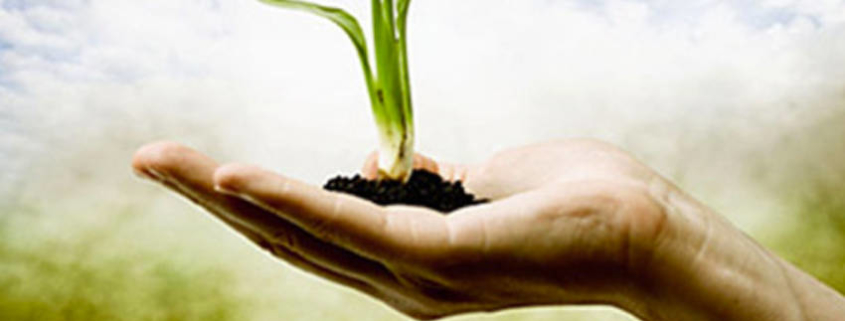Hands On And Holistic Healing
Osteopaths put the body back to normal.
FEELING crushed by the doom and gloom of the global crunch? Aching back? Before you pop a tablet you may want to consider osteopathy as a means of diagnosing the problem.
“By paying attention to the significance of any alteration in structure or function (the joints, muscles, ligaments, bones and connective tissue), an osteopath is able to interpret whole patterns of aches, pains and general health problems,” explains Dr Guy Ashburner (on behalf of the osteopathic profession), who heads an osteopathic practice in Constantia. Ashburner, a UK-trained osteopath, has been living in Cape Town for over two years.
He studied at the British School of Osteopathy and has a post-graduate diploma in paediatric osteopathy from the Foundation for Paediatric Osteopathy in London (formerly called the Osteopathic Centre for Children). The term “osteopathy” was coined in 1874 by an American doctor Andrew Still. The term is derived from the word osteon – which is Greek for bone. Intrinsic to his approach is that the body is a unit which has the capacity to heal itself.
In South Africa, osteopaths are recognised by the Allied Health Professions Council and can practise under the title of doctor. Presently, there is no accredited training available in South Africa for osteopaths.
Hands On And Holistic Healing
In the UK, osteopathic train- ing at undergraduate level takes four years. The training is rigorous and it includes extensive training in anatomy, physiology, pathology, neurology, orthopedics,rheumatology,sociology and psychology.
The body is like a machine, explains Ashburner. If your car is not in the correct gear, it will not start. And so it is with the body. A massage or having a soak in a spa bath may alleviate your pain but it may mask an injury or condition which requires attention. “Osteopathy follows Mother Nature’s laws – making sure that everything is in the right position and works,” says Ashburner.
Medication tends to alleviate symptoms and not the source of the pain. The body, on the other hand, has its own “medicine chest”. That medicine chest is driven by structure – namely through the spine. “Structure governs function.”
Posture is key. When you are sitting, sleeping, working, exercising, if the spine is twisted or out of whack in any way, you are likely to experience pain.
An osteopath’s job is to put the body into its “normal position”, by removing restrictions which are getting the skeleton into a knot. This is done through hands-on manipulations, by palpating muscle, soft tissue etc. The degree of pressure depends on each patient.
Treatment of a baby with so- called colic problems will be very gentle. An elderly person will be worked on very differently to a rugby player. You are in a tizz over the economy. You have a sore neck. Why should you go to an osteopath as opposed to seeking other treatment by a physiotherapist or chiropractor?
The overriding difference, says Ashburner is that an osteopath examines the whole body.
A detailed medical history is taken; neurological and orthopaedic tests are conducted.
The approach is holistic. This is not a quick zoom in and out as in: “Sore neck? Right? Click here, rub there, apply a needle. Thank you, off you go.” That is not what osteopathy is about.
There may be pain in one area but the problem may be as a result of an injury – or imbalance in another area, reflects Ashburner.
“If you have a problem with a toe, it can give you headaches. If someone comes with a knee, we have to consider the hip, foot etc.”
Coupled with the medical history, eyeballing of the body, the hands-on physical treatment (palpating from toes up to skull), the osteopath considers the lifestyle of the patient. Diet, work and exercise all factor into the equation.
Always be aware of posture. When sitting in chair – at work, in a car – push the butt back into the chair so there is no gap between the chair and your bottom. This will enable the lower back to be concave, that is, arched. Some people come regularly to Ashburner for a general tune-up. Other consult as necessary.Generally, this is not longterm treatment, he says.
For the most part, a couple of sessions is all that it takes. Many require a one-off consultation.
As the treatment is non-invasive and does not involve the use of drugs, it is ideal for infants, children and the elderly. I hopped on Ashburner’s table to see what was involved. My complaints? Besides a tender neck (from long hours at the laptop), I said that I was okay.
He examined my feet, legs, pelvis and spine. So far so good. Then he got to my neck, and whoa! I had no idea of the degree of pain in that area. He asked if he could apply more pressure.
It felt like he was putting it back into position.
I felt immediate relief ? and release. Now, I understand why this doctor’s waiting room is packed.
View a list of common complains that Osteopathy can assist with
Discovery the benefits of Osteopathy
- What is Osteopathy?
- Adult health issues
- Babies and Children
- During and after pregnancy
- Common Complaints
- Testimonials
- Sports Injuries
- Genral Osteopathy FAQs
- The Science & Reasearch



